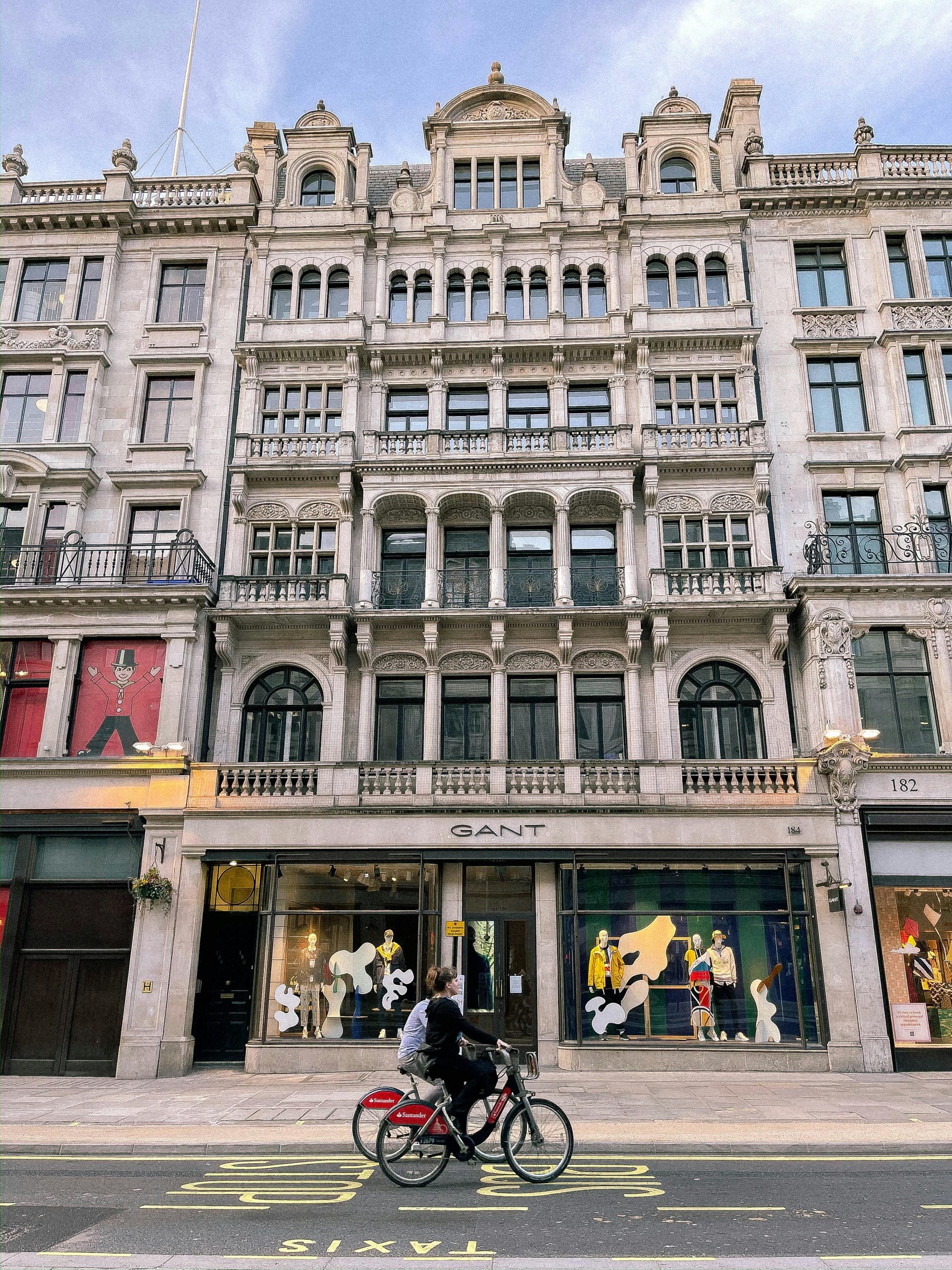Regent Street
John Nash intentionally crafted Regent Street to serve as both a physical and social divide between the affluent West End and the working-class neighborhoods to the east. The street’s graceful curve was not merely for visual appeal; it was a tactical design that redirected traffic while subtly emphasizing the separation between the opulence of Mayfair and St James’s and the bustling, overcrowded streets of Soho and beyond. This demarcation mirrored and perpetuated the sharp class divides in early 19th-century London, influencing the city’s social landscape for many years.

Your analysis of Regent Street as a physical and social barrier is insightful and highlights the intentional urban planning decisions made by John Nash. The design not only serves aesthetic purposes but also reflects the prevailing attitudes towards class and society in 19th-century London. The sweeping curve indeed directs the flow of both traffic and social interaction, making it a fascinating case study in how architecture and urban design can influence social dynamics. It’s interesting to consider how such divisions have evolved over time and whether modern urban planning continues to reflect or challenge these historical patterns of class distinction. Do you think contemporary urban design is addressing these historical divides?
This is a fascinating exploration of Regent Street’s design and its socio-economic implications! It’s interesting to consider how Nash’s architectural choices not only shaped the physical landscape of London but also reflected and reinforced the class divisions of his time.
Additionally, it’s worth noting how the evolution of Regent Street over the years represents a shift in socio-economic dynamics. Today, as one of London’s premier shopping destinations, Regent Street attracts a diverse range of visitors, blurring the lines that Nash originally drew. The street has become a symbol of commerce and culture, suggesting that urban spaces can evolve to reflect changing societal values.
Could we consider how current urban design in London continues to grapple with issues of inclusivity and accessibility? Perhaps Regent Street itself could serve as a case study for modern planners looking to create spaces that foster a greater sense of community while still honoring historical context. What are your thoughts on modern interpretations of Nash’s vision in light of contemporary urban challenges?
Reflecting on Regent Street’s Historical Significance
As a long-time resident of London, I find the architectural and social history of Regent Street fascinating. John Nash’s design indeed serves as a powerful reminder of the city’s historical class divides. However, it’s essential to understand how this intentional separation has evolved over time.
Today, Regent Street stands as a blend of luxury and accessibility, attracting both affluent visitors and everyday shoppers. This evolution raises several questions about social mobility and urban development in London:
Regent Street is more than just a thoroughfare; it’s a living testament to London’s complex history. I encourage discussions that not only explore its past but also envision a more inclusive future for all residents of this vibrant city.